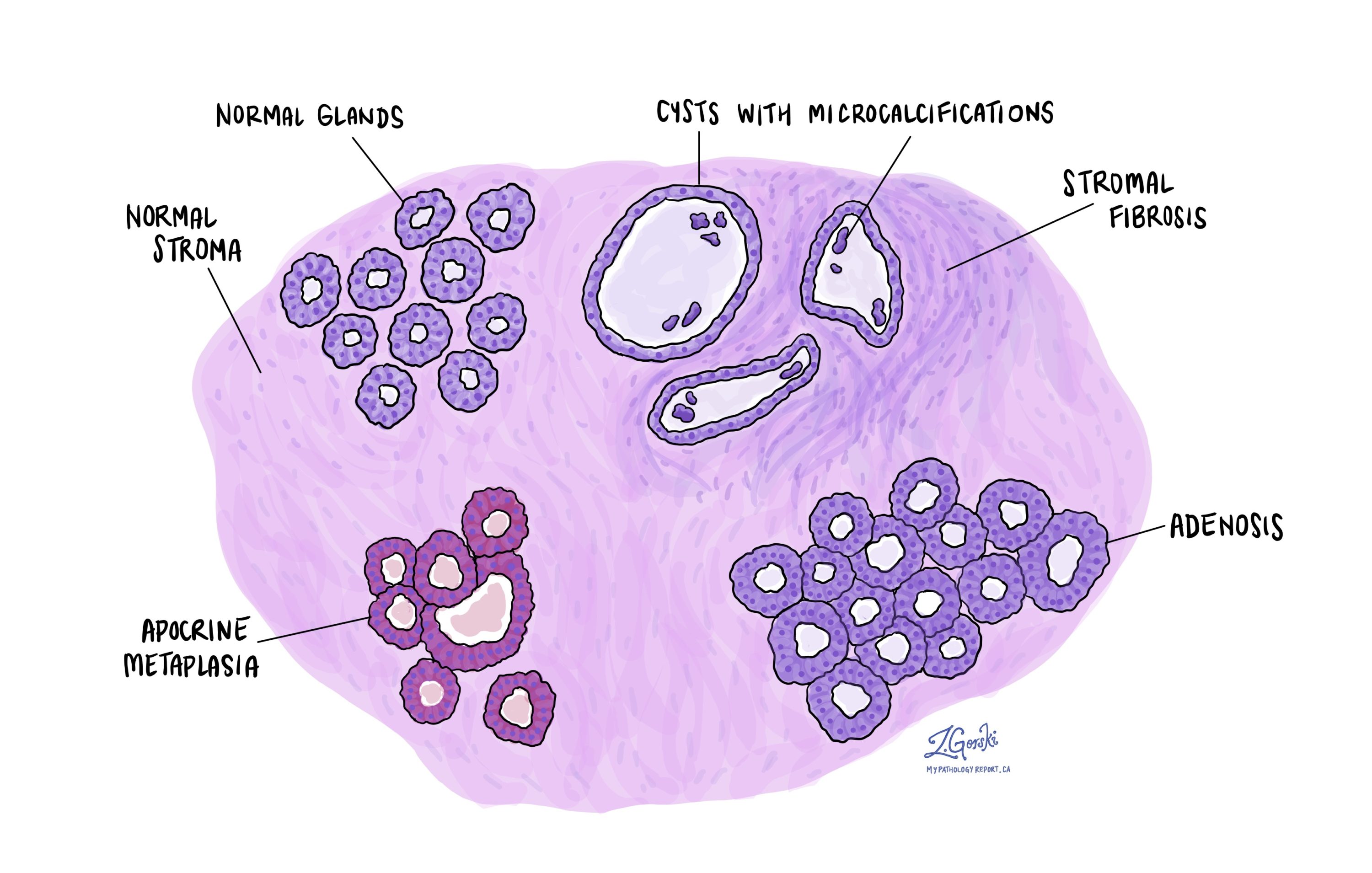by Jason Wasserman MD PhD FRCPC and Zuzanna Gorski MD
July 16, 2024
Background:
Fibrocystic change (FCC) is a term used to describe a group of non-cancerous changes that often develop together in the breast. These changes include cysts, fibrosis, apocrine metaplasia, and adenosis. It is a common finding seen in up to 60% of reproductive-aged women. Another name for this condition is fibrocystic disease.

What causes fibrocystic change?
Fibrocystic change is believed to develop in response to stimulation from hormones such as estrogen and progesterone.
Is fibrocystic change associated with an increased risk for breast cancer?
Fibrocystic changes are not associated with an increased risk of developing breast cancer.
How is this diagnosis made?
The diagnosis of fibrocystic change can be made after a small tissue sample is removed from the breast in a procedure called a core needle biopsy. The biopsy may be performed after densities or calcifications were seen on mammography. Fibrocystic change can also be seen in tissue removed to diagnose or treat cancer or other non-cancerous conditions in the same breast.
Microscopic features
Cysts
Normal glands in the breast are small, round structures that often look empty when examined under the microscope. A cyst is an enlarged, fluid-filled gland. These cysts can be single or numerous and may vary in size. When groups of cysts or single cysts become large enough, they can be felt when the breast is examined. Over time, some of the calcium in the fluid is left in the tissue, where it creates calcifications. These large cysts and calcifications can be seen as abnormalities on ultrasound or mammography.
Stromal fibrosis
If a cyst breaks, the fluid inside will spill into the surrounding stroma. This can cause inflammation and the creation of new stromal fibroblasts. Over time, this reaction can create a scar that pathologists describe as fibrosis.
Apocrine metaplasia
Pathologists use the term metaplasia to describe a change from one mature cell type to another. It is a non-cancerous type of change. In apocrine metaplasia, the epithelial cells lining the breast ducts change from columnar cells to apocrine cells. Apocrine cells are easy to see under the microscope because they are larger than normal cells, and the cytoplasm (body of the cell) is bright pink.
Adenosis
Adenosis means an increased number of glands in the breast. It is also a non-cancerous change. The new glands may be larger than the normal glands, and some may contain fluid. Adenosis is often seen together with columnar cell change (CCC) and columnar cell hyperplasia (CCH).
About this article
Doctors wrote this article to help you read and understand your pathology report. Contact us with any questions about this article or your pathology report. Read this article for a more general introduction to the parts of a typical pathology report.



